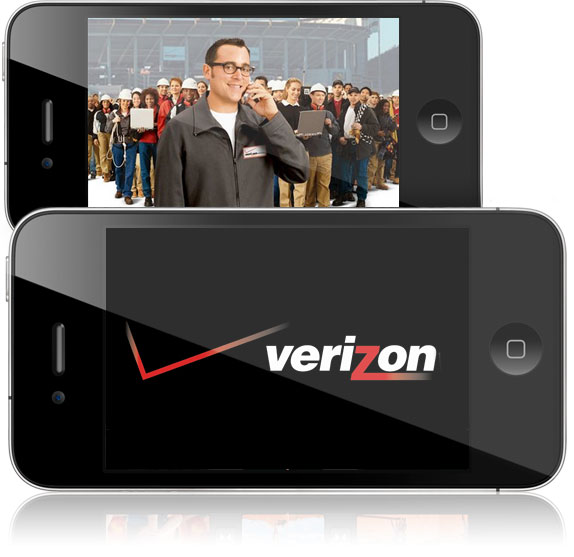 We’ve all heard at this point: Verizon will carry the iPhone, ending AT&T’s nearly four-year-long exclusivity with the smartphone. Apple has reportedly said that by opening itself up to another carrier, it will be able to grow sales more quickly, and while the deal will probably do nothing but benefit the company, AT&T’s future seems filled with uncertainty.
We’ve all heard at this point: Verizon will carry the iPhone, ending AT&T’s nearly four-year-long exclusivity with the smartphone. Apple has reportedly said that by opening itself up to another carrier, it will be able to grow sales more quickly, and while the deal will probably do nothing but benefit the company, AT&T’s future seems filled with uncertainty.
The network has been infamously unpopular with customers, this year being ranked the worst cell phone carrier in the country. AT&T responded by claiming, “We take this seriously and we continually look for new ways to improve the customer service.” Verizon has held onto the title of largest carrier in the country for some time now, and at last count was home to 93.2 million subscribers. AT&T has largely been able to hold onto its number two spot (with 92.8 million customers) due to its iPhone exclusivity. But customer dissatisfaction coupled with Verizon’s growing user base has put AT&T on alert — and today’s announcement has caused many to sound the death toll for the company. Analyst John Hodulik of USB AG told Business Week that Verizon will add more iPhone customers than AT&T will this year, and pointed out that this means it will be the first time in three years that Verizon’s subscriber growth rate will succeed that of AT&T’s.
What else does Verizon have in its arsenal? The long-gone unlimited data plan for the iPhone. AT&T cut unlimited last year, and its return could be motivation enough for some of the long-suffering AT&T customers to bail.
But some analysts argue AT&T’s situation may not be so dire. For one thing, many current AT&T customers are roped into their contracts for the time being after recently upgrading to the iPhone 4 this summer. Not to mention that a considerable amount of users are on family or corporate plans; contracts that are harder to break.
There’s also the possibility that Verizon won’t be able to handle the onslaught of the iPhone. At the moment, AT&T has about twice as many smartphone users as Verizon does, a significant weight of coverage to bear. AT&T’s service rapidly declined due to the popularity of the Apple device, and it’s very possible Verizon faces a similar experience. In its defense, Verizon claims its network is equipped to handle the influx.
Verizon’s iPhone pricing will be identical to AT&T’s: $199 for a 16 GB iPhone and $299 for 32 GB. Verizon will not offer the iPhone on its new 4G LTE network, instead reverting to its older CDMA service. Why? “The first generation LTE chips sets force some design compromises, some of which we would not make. Secondly – and most importantly – Verizon Wireless customers have told us they want the iPhone now,” Apple COO Tim Cook said this morning. Even so, some potential new users may be turned off by the idea of last-gen connectivity, or want to wait until Verizon can produce a 4G iPhone. For example, users will not be able to use calling and Internet functions at the same time on the 3G device. This, combined with the expense and nuisance of switching carriers (case in point, AT&T’s $325 contract break fee) might mean that any negative effects AT&T experiences could at the very least be staggered.
There’s also the fact that the iPhone 5 is likely to be introduced this summer, delaying some AT&T customers wanting to make the switch. By avoiding a sudden, downward shift in customers, the company might be able to leverage something with would-be defectors.
A Verizon iPhone also means AT&T is likely to change its strategy. Up until this point, the carrier has successfully relied on the iPhone’s massive popularity to maintain its customer base, but now the siren song of Verizon’s own Apple contracts means it’s time to change tactics. Very recently, AT&T drew some attention to its new Android lineup, something it’s failed to do in the past. Android’s growth in the last year has been staggering, and identifying itself with the brand certainly isn’t the worst thing AT&T could do at this point.
Editors' Recommendations
- This one Apple Fitness feature completely changed how I exercise
- Best Verizon new customer deals: Galaxy S24, iPhone and more
- An Apple insider just revealed how iOS 18’s AI features will work
- 5 phones you should buy instead of the iPhone 15
- How to find your lost phone (tips for iPhone and Android)


